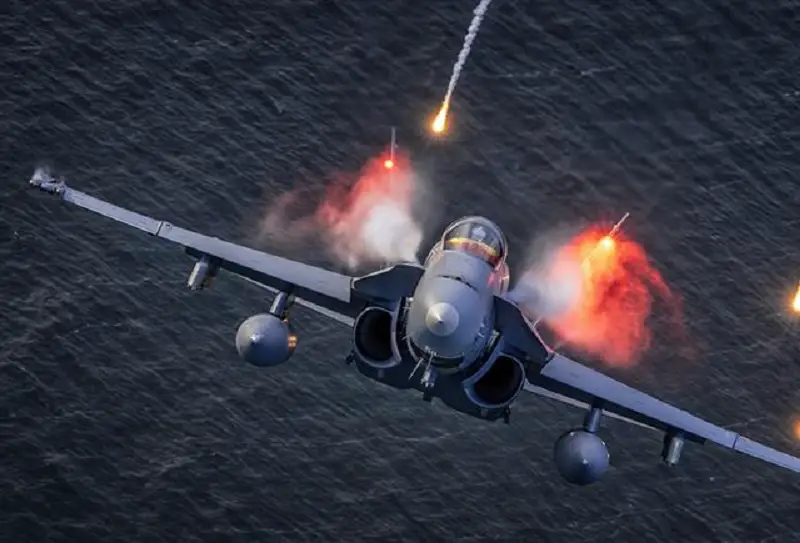The Spanish and French fighter jet detachments currently executing NATO’s Baltic Air Policing were busy last week honing their skills and safeguarding Allied airspace. While on July 7, the Spanish F-18 fighter jets took off from Šiauliai, Lithuania, to conduct aerial drills with a Lithuania C-27 transport aircraft over western Lithuania. During interoperability training the fighters practiced intercepting the slow-moving transport aircraft and related procedures. They also activated their flares, which protect aircraft by diverting infrared threats like heat-seeking air-to-air or surface-to-air missiles to lock onto their heat signatures instead of the aircraft engine.

The French Air and Space Force Mirage 2000-5 fighters, meanwhile, scrambled on two occasions from Ämari, Estonia last week to meet and escort Russian military aircraft flying near NATO airspace above international waters. This routine mission is conducted regularly when unidentified aircraft tracks appear on Allied radars and the Combined Air Operations Centre a Uedem, Germany, decides to order fighter jets to launch and establish the facts in an airborne interception. Together with the Czech Air Force JAS-39 Gripen detachment also stationed at Šiauliai, the Spanish and French fighter detachments collectively provide NATO’s capability to polices the skies above the Baltic Allies and to safeguard the regional airspace 24/7.

NATO Air Policing is a peacetime mission, which aims to preserve the security of Alliance airspace. The NATO Air Policing mission is carried out using the NATO Integrated Air and Missile Defence System (NATINAMDS). The Supreme Allied Commander Europe (SACEUR) has the overall responsibility for the conduct of the NATO Air Policing mission. Allied Air Command (AIRCOM), headquartered at Ramstein, Germany, oversees the NATO Air Policing mission with 24/7 command and control from two Combined Air Operations Centres (CAOCs): one in Torrejon, Spain, which covers European NATO airspace south of the Alps, and one in Uedem, Germany covering the north. Established in 1961 during the Cold War, NATO Air Policing has been an integral part of NATO Integrated Air and Missile Defence (IAMD) for 60 years.

NATO member countries provide the necessary aircraft and assets for the air policing of their own airspace, under SACEUR direction. NATO has been protecting the Baltic skies since 2004, when Estonia, Latvia and Lithuania joined the Alliance. NATO member countries that possess an air policing capability voluntarily contribute to the NATO Air Policing mission in the Baltic States and this responsibility is rotated every four months. The capability for the mission in the Baltic States was established by the deployment of NATO fighter aircraft to Šiauliai Air Base in Lithuania. Since 2014, NATO has also been using Ämari Air Base in Estonia for the deployment of additional air policing assets.















